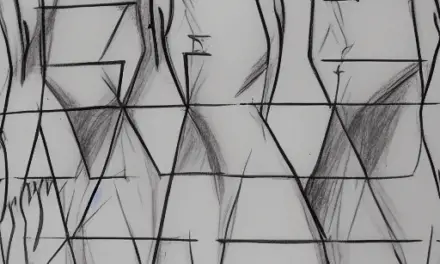Organizing your home will help you keep all of your items in their proper place and know where they belong. This will also make it easier to see which items need replenishing, which need repairs, and which should be disposed of or donated. Organizing your home will also make your life more efficient.
Create a drop zone
A drop zone is a dedicated area of the home where you can store items that don’t have a permanent home. This area can contain anything from keys, papers, coats, shoes, and more. This space can be especially useful in homes with small spaces. For example, a drop zone in a hallway can help you find keys quickly.
It can also serve as a convenient place for kids to put on their shoes or grab a coat. It’s also a good place to store your kids’ sports gear. When you have a drop zone, you won’t have to spend valuable space on a counter or dining table to store all of your items.
Create a drop zone in any part of your home. This space can be in the entryway or in a living room. If you have a console in the living room, you can put it in there as well. You can also place storage baskets in the open shelf. Keeping these items organized will keep you from feeling overwhelmed.
In addition to creating a drop zone, you can also create a designated area for storing mail. You can place dedicated cubbies in the Drop Zone or use vertical space to mount file folders. Moreover, the entryway is also an excellent place to store pet gear. A tack box or an open cubby will help you keep track of your dog’s toys and other items. You can also add decorative rugs and throw pillows to make the area look more organized.
Label your storage containers
Labeling storage containers is an important part of home organizing. Not only do you need to be able to find items, but you also need to have a simple way to find them. A good way to do this is to label your containers on the top and sides. This way, you don’t have to constantly open the containers and look through all of the contents to find what you are looking for.
One great way to label storage containers is to use picture labels. These are inexpensive and easy to apply. You can use them on toy bins, storage boxes, and drawers. For a more permanent solution, you can print them out on heavy paper and stick them to the storage containers. If you’d like specific shapes and sizes, you can also print out labels from a template.
Another great way to label storage containers is to use chalkboard labels. This is a great way to organize small things and change labels whenever necessary. You can also use a chalkboard to write notes and keep track of items in your home. These are available at most craft stores and online.
Group items into categories
Grouping like items is a useful way to organize your home. By doing so, you’ll be able to find what you need easily and quickly. It will also help you determine how much of an item to purchase and when to stock up. Plus, it will save you time and money. For example, you could group toys and playthings together. Similarly, you could group tools and files and books together.
Before you start storing your items, empty the room. You will be able to see everything better, so it’s important to sort things into groups. This includes the items that are commonly used and those that are less used. You can then make decisions about where to store them in a more convenient place.
After you’ve categorized your items, you can move on to organizing your pantry. For instance, you should group items by type, which makes them easier to find. You should also group items by their purposes, such as for recycling, sale, and keep. Once everything is grouped, wipe the surfaces and make sure they’re as clean as possible.
Organize your laundry
One of the easiest ways to organize your laundry is to create a laundry schedule. This will help you make sure that you don’t forget to do laundry. You can create a schedule for each person in the family or for each load. You can also include basic instructions on how to do the laundry. For example, you can place your socks in a mesh bag and wash them separately from the rest of your clothes. This will help you stay on schedule and reduce the possibility of missing a pair of socks.
To begin, sort the items in your laundry room. Determine what is useful and what isn’t. For example, you may no longer need gallons of stain remover. If you do have excess, you can just toss it. Also, look at what is used often.
Another way to organize your laundry is by labeling the baskets. Labeling each hamper will prevent bottlenecks and save space in the laundry room. Using a wall-mounted compact ironing board can also help you save space. Maintaining a clutter-free laundry room can be a challenge, but with these tips, you can make it easier to keep it that way.
Organize your closet
The first step to organizing your closet is to eliminate clutter. Start by taking out all of the items and labeling them. This will force you to make tough decisions and reduce the clutter in your closet. Professional organizers suggest that you label certain sections of the closet as “keep,” “donate,” and “move.” It is also helpful to have a basket or laundry hamper nearby for dirty clothing.
You can also purchase space-saving hangers to maximize your closet space. Make sure to buy the right size and material. You can purchase these at stores such as Target, Bed, Bath & Beyond, and The Container Store. You can also use vertical shelf dividers, clear plastic boxes, and hanging canvas shelves to organize your clothing. You can also use attractive wicker baskets on open shelves. You can also hang your clothes and shoes using hooks.
Regardless of the size of your closet, you can still make it more functional and attractive with the right products. For example, you can use shelf dividers and shirt boxes to create zones within the closet. You may want to consider relocating your bedroom furniture into your closet. This will not only make your closet more functional, but it will also conserve bedroom space.
Organize your pantry
Organizing your pantry will make it easier for you to see what you have and avoid making unnecessary purchases. It will also save you time when preparing your meals since you won’t have to run back to the store to get what you need. However, you’ll have to dedicate some time to this task. It might take about two to three hours, so plan accordingly.
Start by clearing out outdated food and items that you’ve never used. Then, make a list of the items you use most often. Make sure that you update your list every now and then so that you won’t forget any essential items. Next, place similar items together. For example, you should group similar types of condiments and oils together. You should also sort the items into categories.
Then, sort everything into the appropriate containers. Putting things in their proper category will make your life easier, and you will know where everything is. Label the shelves to make it easier for you to find what you’re looking for. Make sure to put things that you use every day at eye level. You should place items you rarely use on the bottom or on the top of the shelves, so that you can easily access them. You should also consider using the wall space to keep non-food items. Another good idea would be to hang a wall-mounted bag dispenser to hold trash bags.
Organize your kitchen
To organize your kitchen, take a walk through it and consider what parts don’t work well. Think about what you use regularly, which items are out of reach, and what items are cluttered. Next, list the items and their categories in each area of the kitchen. Then, organize them accordingly.
While every kitchen is different, there are some basic rules that will make your life easier. These rules aren’t meant to be arbitrary. Prioritize them as needed, and you’ll be well on your way to a more organized kitchen. Once you’ve sorted out the basics, you’ll have to decide whether you’re going to tackle the kitchen as a whole or tackle one part of the room at a time.
You should also focus on maximizing vertical space in the kitchen. Organize the drawers and cupboards so that you have plenty of space to keep more items. Use deep cabinets for items you don’t use as often, and use tall shelves for more important items. Hanging pans or pots can be a great way to free up valuable cabinet space.













